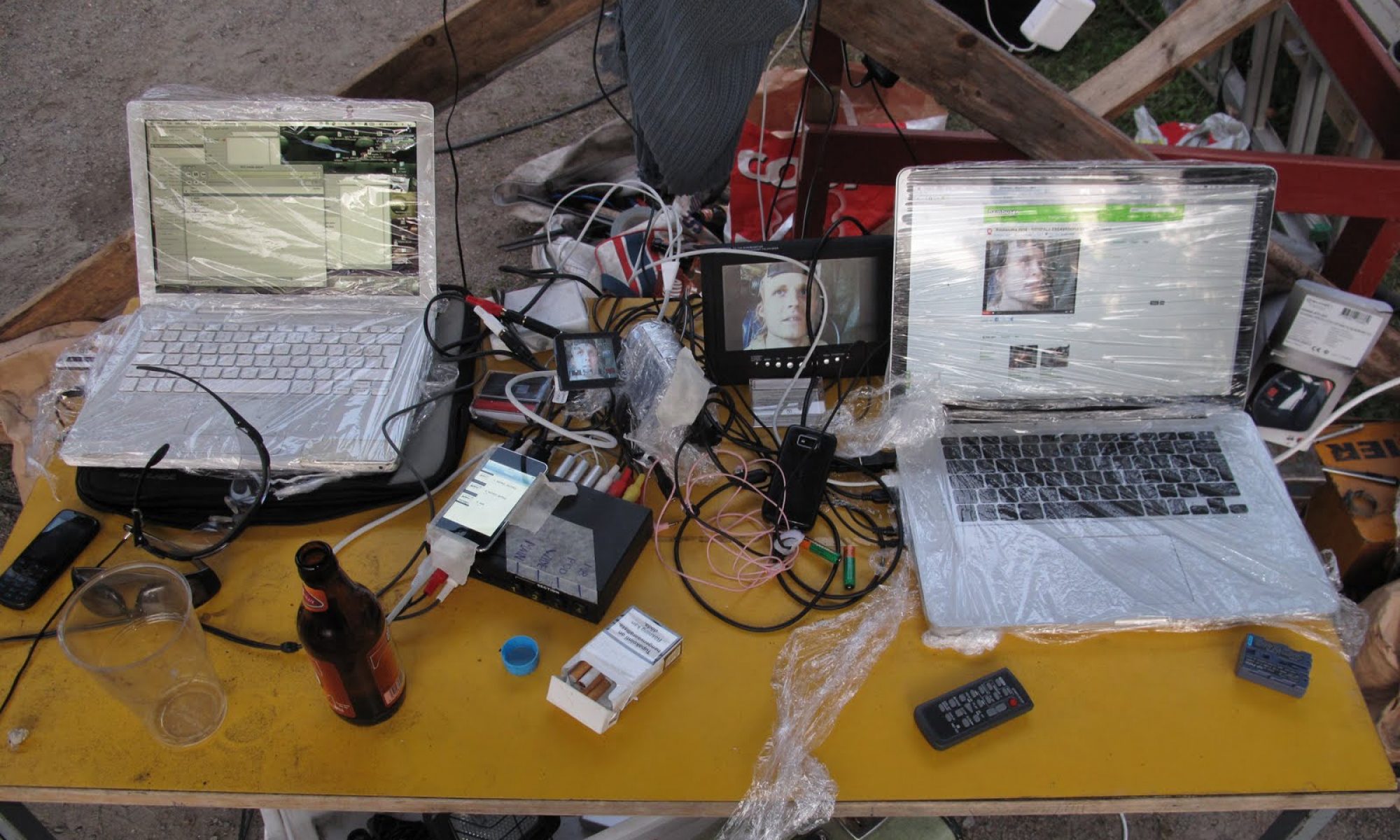– Well, [David] Tudor was one of my first customers. [John] Cage and Tudor visited me at my studio in Berkeley and I remember that occasion. My studio at that time was ten feet wide and I worked out on the sidewalk. It was so crowded in there we hauled the workbench out on the sidewalk on good days and set up my oscilloscope and worked out there. Cage came by and for voltage control I had hooked up my keyboard to an FM module that I’d built, a little module that was an FM receiver and I could play stations on it because I had one of the first veractor tuned FMs. Cage, as you can imagine was, just enormously interested in the fact that I could tune each key to a station and then proceeded to play the radio. I had already met Cage while putting together some of his pieces that involved perhaps multiple radios, phonographs and so on. At that time, in fact the first instrument that he encountered that I had built was a device that gave you a pitch according to where you were along the sound beam. Add it was a guidance device for the blind. At that time I was working a lot with prosthetics for the blind and Cage played it as a musical instrument in this piece and then later on saw my voltage control tuner. He didn’t actually purchase one. I’m not sure that I was offering it for sale in fact. But David Tudor came along with him and commissioned a sound locator that was based on a very beautiful Aztec-looking design. Four circular motifs in which you played a five-channel sound system. Four speakers in the corners of the room and a fifth directly overhead. That was my way of making a equal interval polyhedron. Not taking care of the bottom but certainly the top and Cage bought that and the rather complex voltage controlled amplifier that it controlled to distribute sounds and he used in a number of pieces. I believed he used it in a early version of the Rain Forest Piece.
– Do you recall the date of that?
– I have a hard time with years to tell you the truth.– The 60s of course?
– Oh early or mid sixties .– What was the war doing?
– This was early 100 series stuff. By ’69 I had abandoned the 100 series so it would be around ’66.
Extract from 1991 Buchla tape transcription from the Steina and Woody Vasulka archives.
I submitted a PCB design revision of the Arradio module to a factory. Made the design using KiCad and called the unit Radio Kid. The revision uses a different FM radio submodule, includes reverse voltage protection, the output has a 1k buffer, the board is fitted with a U.fl-smt-1(01) connector for a SMA antenna connector (optionally mounted on the panel), the circuit includes a “latch-toggle” which prevents the tda7088 locking to FM channels and it is 2hp smaller then the original. Small changes to the original design, yet milestone in for my electronics hobby.

